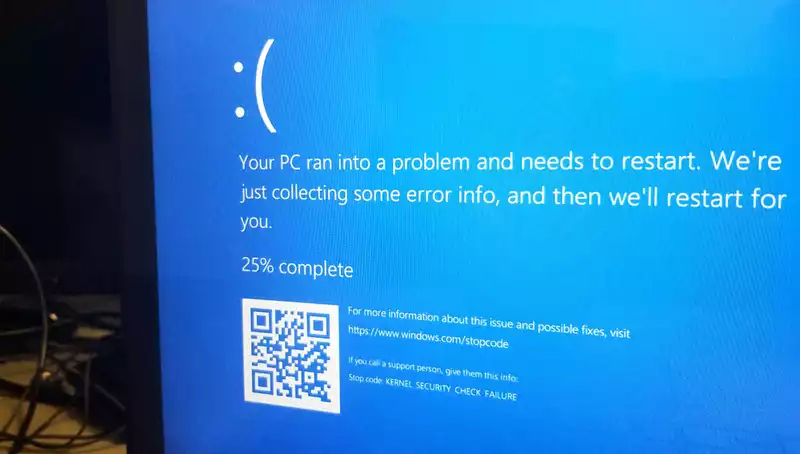The painful, but iconic, blue screen of death, aka BSOD, seen in Windows operating systems for years, seems to be making a comeback in Windows 11.
Microsoft's latest operating system has switched the major crash screen to black instead of blue. This was a minor change, but one that shakes off the infamous feature that has become synonymous with Windows, albeit not in a very positive way.
Windows Central noticed that Microsoft is bringing back the blue crash screen in the latest Windows 11 update.
"As in previous versions of Windows, we have changed the color of the screen to blue when a device stops working or has a stop error," Microsoft's latest patch notes for the upcoming Windows 11 update explain. This is about as much detail as Microsoft provided, so this move back to blue is open to speculation.
Sticking with the BSOD is familiar, and one could argue that it warns users of a serious crash. One could also argue that using a black screen of death could disrupt a person's mental muscle memory.
And the original BSOD was first introduced in Windows 3.0 as a way to inform IT professionals that Windows had suffered a kernel error and to provide information to technical support. Thus, Windows users without a technical background could see BSOD as a clear indicator that a system crash was serious enough to seek help from people with an IT or technical background.
The latest Windows 11 update also brings a series of other fixes and tweaks, ranging from notification errors to file explorer issues.
As it stands, Widows 11 is decent, but has a long way to go before its quirks are improved. But if you want to get in on the flow of Microsoft's new OS, check out our selection of the best Windows 11-compatible laptops.










Comments